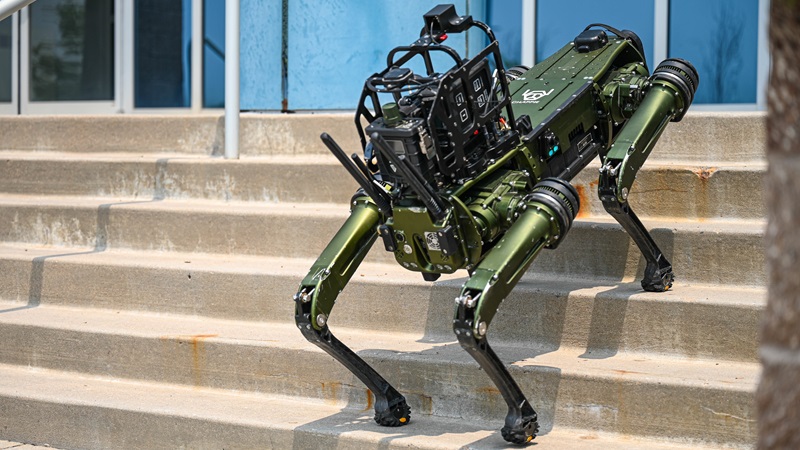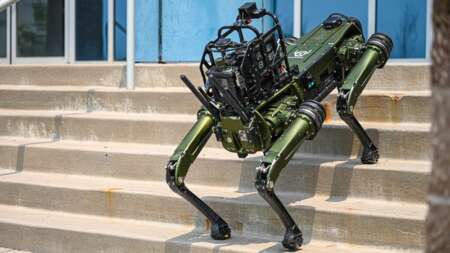
Buckley Space Force Base in Aurora, Colo., is home to one of the Defense Department’s (DoD) two chemical, biological, radiological, and nuclear (CBRN) quadrupedal unmanned ground vehicles – otherwise known as a robot dog.
The four-legged robot, affectionately called CHAPPIE, has been in use on the base since July, according to the dates on some photos released by the service to the Defense Visual Information Distribution Service (DVIDS).

CHAPPIE includes remote CBRN sensing capabilities using the department’s current inventory of detectors, distinguishing it from other systems and making it a significant technological advancement in CBRN defense.
“This QUGV is not only an operational game-changer for CBRN defense but also serves as a proof of concept for technological innovation within the Air and Space Forces,” U.S. Air Force Master Sgt. Dominic Garcia, section chief for Installation at the Office of Emergency Management, said in a press release.
“The idea came after a deployment to Syria where we were locating and destroying ISIS chemical weapons while facing novel chemicals … I thought there had to be a safer and faster way,” he said.
In 2022 Garcia received $1.24 million, through the Department of the Air Force’s AFWERX technological grant program, to develop a remote CBRN sensing capability. Within 20 months, Garcia reached 90 percent of his goal, conducting tests at the Defense Threat Reduction Agency and Dugway Proving Ground.
Garcia plans to boost CHAPPIE’s agility, mobility, and effectiveness with upgrades aimed at navigating even more complex environments. With advancements in sensors and AI, CHAPPIE will be able to detect and respond to threats faster and more accurately, keeping it at the forefront of CBRN defense and helping the U.S. maintain its technological edge in global defense.
The use of autonomous equipment or robots is not a new skill in the military, but these robotic versions of man’s best friend are new and increasingly popping up through the services.
These agile, sensor-packed canines are being deployed everywhere from U.S. bases to college campuses – some armed with pedestrian sensors and in the military’s case a rifle for high-risk missions.
For example, a photo published on DVIDS on Feb. 24, 2023 shows the latest addition to the Cape Cod Space Force Station, Spot – an unmanned ground vehicle in the form of a semi-autonomous “dog” meant to enhance their base security protocols.
More recently, the Army shared their recent addition to assets in the Middle East – a robot dog armed with an artificial intelligence powered gun – according to another photo published to DVIDS on Sept. 26.
